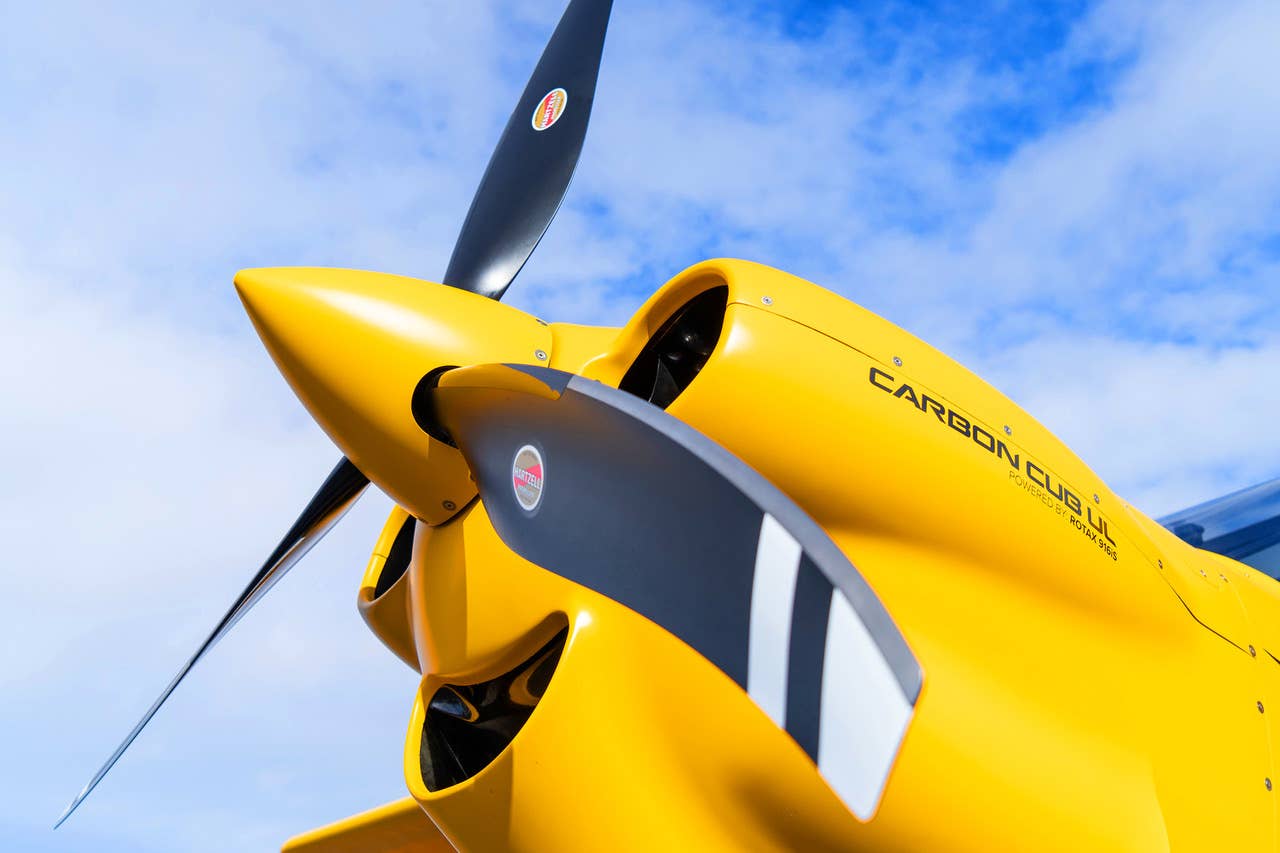Don’t Be Dense About Density Altitude
As the warm weather arrives, your airplane’s performance can really suffer
It can prevent you from taking off from the same runway you did the day before. It will sap power from your engine. It can eliminate any chance of a climb rate on departure. It can drastically increase your takeoff and landing rolls. What aviation phenomenon has this much power over your flying? Density altitude. And if you fly without paying it due attention, you may find yourself staring down the end of a runway without hope of stopping or taking off. Even if you do make it in the air, high-density altitudes can cause you to quickly meet up with terrain that has a gradient superior to your ascent.
Yet there's no way a pilot can grasp what density altitude is all about without knowing a little about the word "density." Its official definition is "the quantity of something per unit measure, especially per unit length, area or volume." In the case of density altitude, it should read "the quantity of gas molecules per unit of volume." Each gas (air) molecule has a certain mass or weight. The more air molecules per unit of volume, the more tightly populated is that unit of volume. Thus, we say that parcel of air is more dense.
According to the laws of physics, if the temperature and/or pressure of a gas are altered, density (remember: number of molecules per unit of volume) also will change. For example, if you heat gas, the air molecules begin to move faster and strike each other. As they perform this dance, they spread out. Think about it like breaking the balls on a pool table. One fast-moving molecule comes in and hits some other molecules, speeding them up and spreading them out. In the long run, fewer molecules will occupy a given unit of volume, such as a square foot.
The opposite is true with decreases in temperature---molecules slow down and become more closely packed. Take water, for instance. There are more water molecules in a cubic foot of liquid (cooler) water than in a cubic foot in gaseous (hotter) form. If you don't believe me, weigh them and see for yourself (more molecules equals more weight!).
Pressure also affects density. Increasing pressure smooshes molecules together, packing in more per unit of volume. In other words, density increases. The reverse occurs if pressure is decreased. When pressure is released, molecules can stretch out and have some breathing room. As they spread out, there are fewer per square foot, or whatever measurement you use, as density decreases. While variations in weather conditions have an effect on the ambient pressure, the biggest influence is altitude. Remember that for every 1,000 feet in altitude change, there's one inch of mercury change in pressure. So the difference in molecular compression due to ambient pressure is much less in Denver, Colo., at around 5,000 feet versus Tampa, Fla., which sits near sea level.
Density altitude is commonly referred to as the actual altitude at which the plane "feels" it's flying. For instance, an airplane taking off in Billings, Mont., (elevation 3,500 feet) with an altimeter setting of 29.82 and a temperature of 40 degrees C is being flown at a density altitude of 7,100 feet---the aircraft actually "feels" as if it's flying at 7,100 feet. So the engine, wings and propeller act as though they're much higher than what is read off of the altimeter. Hopefully, every pilot is aware that his or her plane flies a lot different at higher-density altitudes and some care is in order. That's the layman's version. Just like everything else in aviation, though, density altitude has an official defini-tion: "pressure altitude corrected for non-standard temperature." Do you recall how temperature and pressure both influence density? Aren't those two key words found in the definition of density altitude? Absolutely. So, basically, by calculating density altitude, we're figuring out how atmospheric pressure and ambient temperature affect the airplane.
In fact, increases in density altitude, that is, fewer molecules, decreases the available horsepower created by the aircraft's engine and steals performance from the wings and propellers. It also causes the aircraft's true airspeed to increase. But how can the number of air molecules, which are so small they can't even be seen by the naked eye, keep airplanes from becoming airborne and rob them of vital performance?
In order for engines to create power, oxygen is required so that fuel can be burned. If you have more oxygen (molecules) available, you can burn more gas and, in turn, create more power. If there's less oxygen available, which is the case at higher-density altitudes, less power can be produced. Furthermore, the engine likes a particular ratio of fuel to oxygen. This is why at density altitudes near sea level, which are ripe with oxygen molecules, full rich mixture is used. Then, climbing up to higher altitudes where air molecules, including oxygen, become more and more scarce, pilots must reduce the fuel supplied to the engine by leaning the mixture. This keeps the engine happy by maintaining its desired fuel-to-air ratio.
The wings and propellers function best in thick air, which is chock-full of molecules. This is due to the part of the lift equation dealing with Newton's Third Law of Motion: For every action, there is an equal and opposite reaction. As air flows over a wing, it's dumped downward off of the aft end. Each air molecule that makes this trip brings about an equal and opposite reaction. More molecules, more reaction. If there is, say, 5,000 pounds of air molecules being pushed down by the wing, there will be an equal and opposite reaction of 5,000 pounds augmenting aircraft lift. At higher-density altitudes, however, there are fewer molecules available. Therefore, there's less equal and opposite reaction, or less lift.
Unfortunately, propellers can only go so fast, usually somewhere in the neighborhood of 2,500 rpm, which in thick air pushes lots of air molecules, yielding more thrust than 2,500 rpm in thin air with its fewer particles. But wings have to develop a certain amount of lift to support the weight of the aircraft or else, obviously, the plane won't fly! So how could you make up for the decreased number of air molecules passing over the wing at higher-density altitudes? What happens in the real world is that aircraft must travel faster. The faster the wing goes, the more molecules will be encountered at a given moment. More molecules, more lift.
Dig deep into your memory. What's the definition of true airspeed (TAS)? It's "the speed of the airplane through the relatively undisturbed air mass." We just learned that in order to keep the plane flying at high-density altitudes, the aircraft must travel through the air mass at a high rate of speed. Hence, what's actually increasing is the true airspeed. Going back to our primary training, we know if true airspeed increases, so does groundspeed. If your groundspeed is higher during landing, you know the ground roll will be longer because there's more speed to dissipate. And if more speed is required to pass enough air molecules over the wing to make it fly, the longer the takeoff roll will be as well.
How come the fact that the plane is traveling faster doesn't show up on the airspeed indicator? It's because the airspeed indicator displays indicated airspeed, which is derived from the impact pressure---the number of molecules jammed into the pitot tube at a given moment. Since there are fewer molecules available at higher-density altitudes, the pitot tube must pass through the atmosphere faster to jam as many air molecules down its throat as it would passing through thicker, more densely populated air.
This is why a 65-knot final approach speed is used whether you're at sea level (in thick air) or at high altitude (thin air), or on a hot day, etc. At sea level, the plane travels around 65 knots TAS to encounter enough air molecules to stuff 65 knots' worth of impact pressure into the pitot tube. While at higher altitudes, lower pressures or higher temperatures, the plane has to travel, say, 80 knots TAS to pack the pitot tube full of enough molecules to yield 65 knots worth of impact pressure.
Thus far, we've seen how increases in temperature and decreases in pressure both lead to less dense air, thus higher-density altitudes. We've also seen how high-density altitudes can decrease aircraft performance. There's another factor that many people neglect to take into account when determining density altitude---humidity. Water vapor molecules can and do displace nitrogen, oxygen and other gases. Considering that water molecules weigh less than those of nitrogen or oxygen, if water displaces these other elements in a particular parcel of air, it ends up weighing less and is thus less dense (O2 has an atomic weight of 32, N2 has an atomic weight of 28, and H2O is the lightest at an atomic weight of 18).
The lesser mass of the water molecules translates into less potential energy when they're pushed down off the back of a wing or propeller. The equal and opposite reaction from the water molecules is less than if there were oxygen or nitrogen molecules making the trip instead. Also, water doesn't burn, so whenever water displaces oxygen, there's less of the latter available to the combustion cylinders of the engine.
Keep in mind, too, that hotter air can hold more water than cool air. At a given relative humidity, air at 15 degrees C contains less water vapor than the air at a temperature of 30 degrees C. Of course, if there's more water in the air, it results in a higher-density altitude (less atmospheric density). For example, a field with a pressure altitude of 5,000 feet, 37 degrees C and zero percent humidity bears a density altitude of around 8,600 feet. Increase the humidity to 100%, and the density altitude jumps to 9,500 feet. Evidently, you shouldn't listen to the endless references that humidity doesn't have an affect on density altitude!
Considering how important density altitude is for the ability of the wing, the propeller(s) and the engine to do their jobs, pilots should always go the distance and check it prior to flying. Certainly, pilots need to use caution when dealing with the three Hs: hot, high and humid conditions. While the performance charts of most aircraft have a density-altitude correction built in to the process of calculation, it's not a bad idea to figure out density altitude itself if for nothing more than shock value. When was the last time you maneuvered an airplane, or even more important, taken off or landed above 8,000 feet? Put that into consideration when the density altitude you uncover is up there. At high-density altitudes, the plane acts differently; it performs more sluggishly, if it performs at all. So don't let density altitude sneak up on you by being dense about it and its dangers.

Subscribe to Our Newsletter
Get the latest Plane & Pilot Magazine stories delivered directly to your inbox






